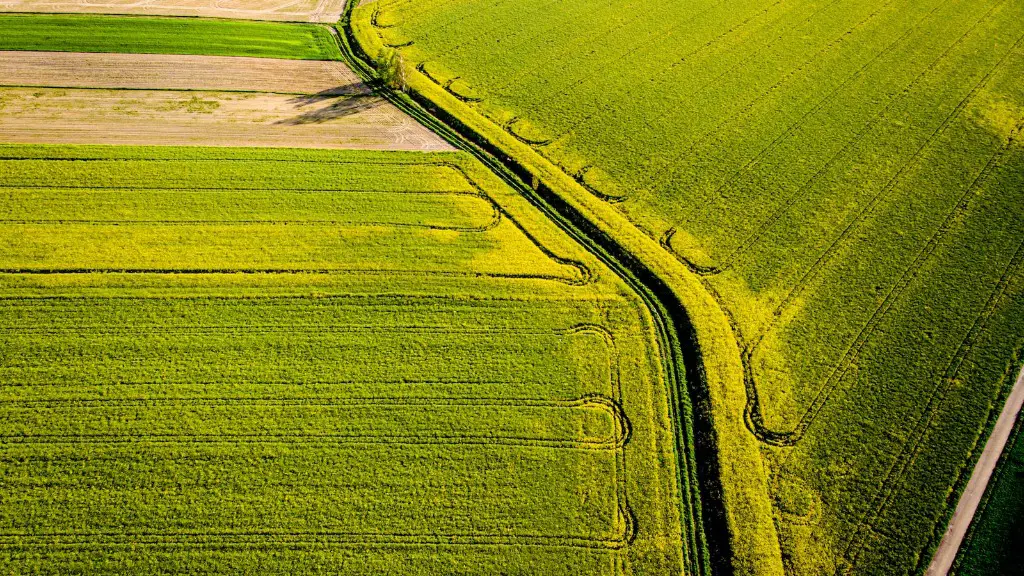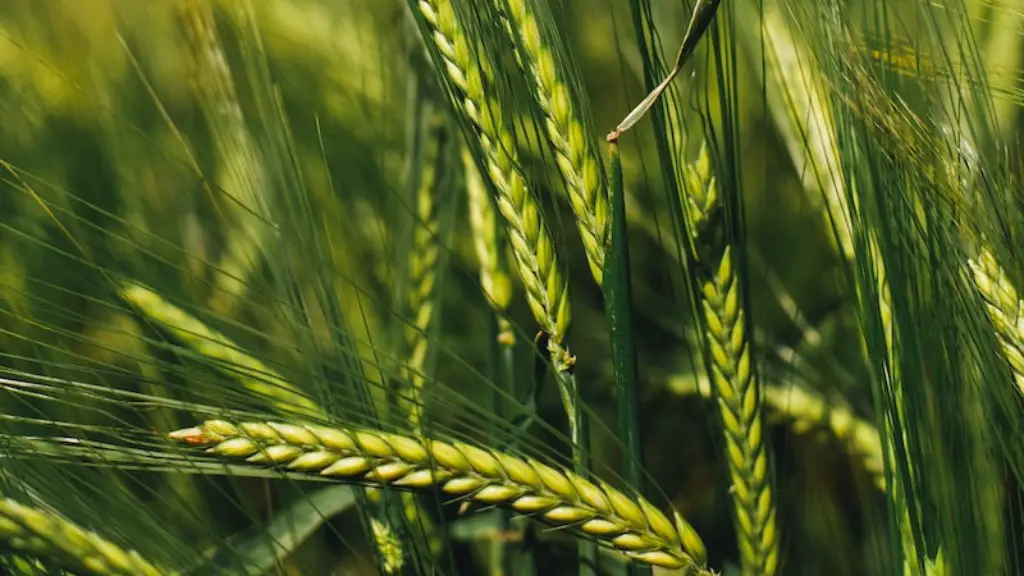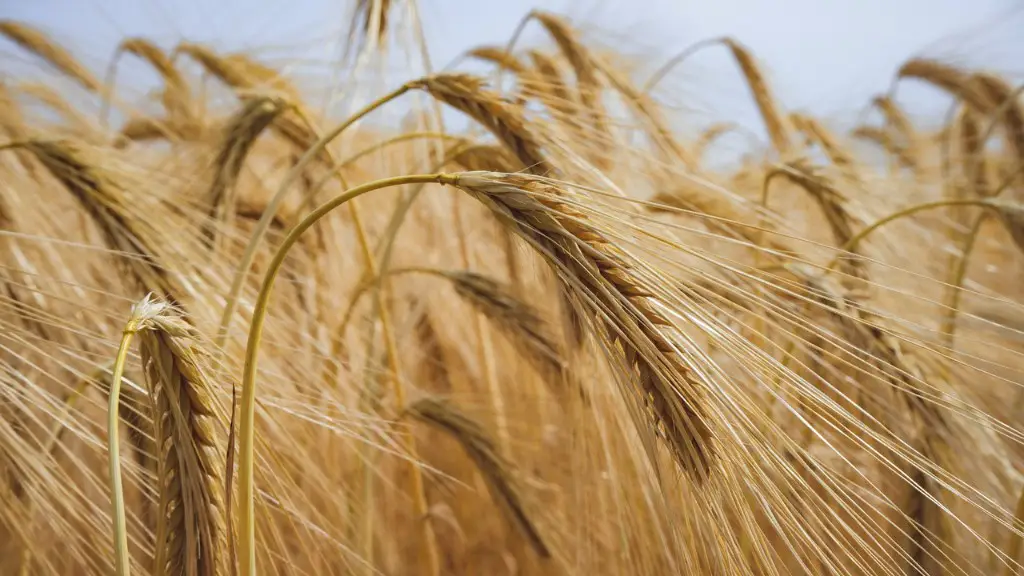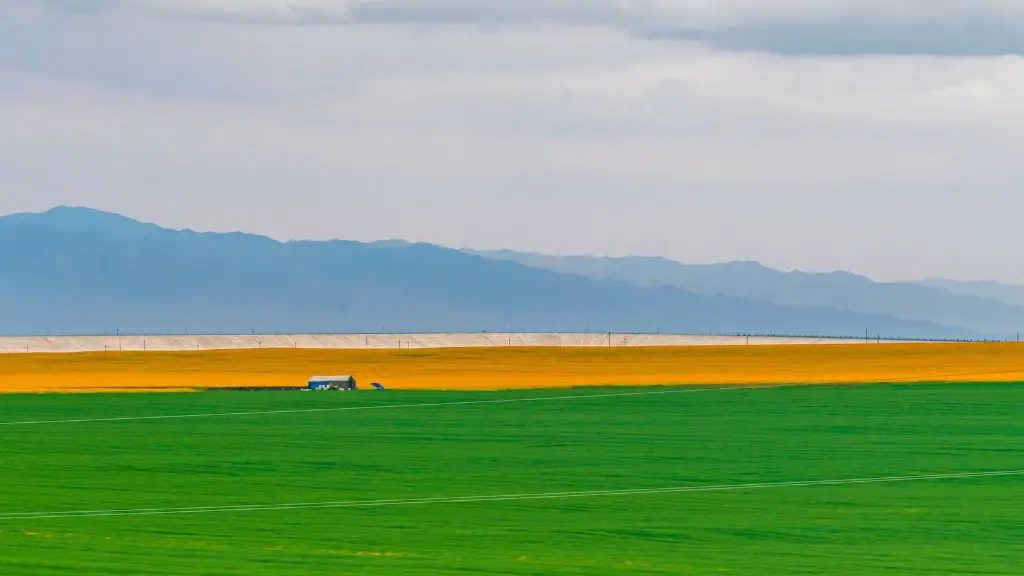Green agriculture is a farming practice designed to reduce environmental damage and improve soil health. It involves taking steps to conserve natural resources, reduce the impact of agriculture on climate change and improve the environment. Its main components include sustainable crop and animal production, conservation tillage and efficient water and energy use. At its core, green agriculture works to address the long-term sustainability of both the land and the environment.
Organic farming is a part of green agriculture and it involves growing crops without the use of chemical fertilizers or pesticides. The goal of organic farming is to maintain or increase soil fertility, reduce environmental contamination and make the land more resilient to drought and other stresses. Some of its practices include crop rotation, mulching, composting, and integrated pest management. Organic farming is becoming increasingly popular around the world as it is considered to be more sustainable and better for the environment.
Conservation tillage is another part of green agriculture. This practice involves limiting soil disturbance, using minimum or no-tillage methods that help to reduce soil erosion and improve soil fertility. It also increases water infiltration, improves the health of soil microorganisms, and decreases air and water pollution. Conservation tillage has been shown to reduce herbicide usage, improve water quality and nutrient retention, and improve soil health and structure.
Using renewable energy is another important component of green agriculture. Renewable energy sources, such as solar and wind, are becoming increasingly common on farms. These sources can provide farmers with low cost, low environmental impact, sustainable energy. They can also reduce the amount of energy required for agricultural operations and provide a reliable, renewable source of power for farm buildings.
Green agriculture also involves practices such as reducing waste, recycling and composting, and improving the efficiency of water and energy use. These practices are important because they help to conserve natural resources and reduce the impact of agriculture on climate change. Additionally, they can improve the quality of life of farmers and their communities and help protect the environment.
Organic Versus Conventional Agriculture
Organic agriculture and conventional agriculture are two distinct approaches to farming. Organic agriculture follows practices designed to conserve resources and keep the land healthy, whereas conventional agriculture focuses primarily on producing food with the use of chemical fertilizers and pesticides.
Organic farming is based on the principles of soil and water conservation, the promotion of biodiversity, the use of renewable resources, and the use of natural pest control. It focuses on producing food through sustainable, natural farming practices and aims to reduce the environmental impact of agriculture. Organic farming also has numerous other benefits such as improved soil fertility, greater resistance to drought, and fewer pest and disease infestations.
Conventional farming, on the other hand, relies heavily on chemical fertilizers, pesticides, and herbicides to produce food. These practices are known to have negative impacts on the environment, including air and water pollution and degradation of soil, as well as health risks from the chemicals used. Additionally, conventional farming tends to be more expensive than organic, as it requires input from expensive chemical fertilizers and pesticides and has higher costs for labor.
Organic agriculture and conventional agriculture both have their pros and cons. In general, organic agriculture is considered to be overall more sustainable and better for the environment than conventional approaches. However, the choice between organic and conventional farming will depend on the specific needs and interests of the farmer.
Benefits of Green Agriculture
Green agriculture has numerous environmental and economic benefits. As previously mentioned, by utilizing sustainable farming practices, green agriculture can reduce pollution, conserve natural resources, protect biodiversity, increase soil fertility, and reduce the impact of agriculture on climate change. Additionally, green agriculture is better for farmers’ financial health in the long run, as it’s often more cost-effective than conventional farming.
Organic farming is particularly important for small-scale farmers, as it can provide a more affordable and sustainable alternative to conventional approaches. Studies have found that organic farming has been able to provide good yields and incomes for small-scale farmers in developing countries, improving their food security and livelihoods. Organic farming requires less input and is generally less costly, so it can provide an affordable and sustainable option for farmers with limited resources.
Green agriculture can also benefit the environment in other ways, such as increasing water infiltration, reducing soil erosion, and improving the health of soil microorganisms. Additionally, green agriculture can provide farmers with a range of benefits, such as improved nutrition, better health, and improved well-being. All of these benefits demonstrate the importance of green agriculture and highlight why it’s an important part of sustainability and climate change efforts.
The Drawbacks of Green Agriculture
While green agriculture has many benefits, it’s important to recognize that there can also be drawbacks. For instance, organic farming requires more labor and expertise than conventional farming, which can be a challenge for resource-poor farmers. Additionally, organic farming is too expensive for some farmers and may not be feasible for large-scale operations. Although research is ongoing to try to make organic farming more accessible, the costs can still be a barrier for many.
Furthermore, green agriculture can also require significant investments in infrastructure and technology. As green agriculture often includes practices such as conservation tillage and renewable energy, farmers may need to make investments in equipment, materials, and technology in order to be successful. Ultimately, these investments can be costly, and some farmers may struggle to afford them.
Finally, while green agriculture has the potential to produce abundant yields, the yields of organic farming may still be lower than those of conventional farming in some cases. As organic agriculture often relies on natural pest and disease control rather than chemical inputs, some yields may be reduced. Ultimately, the yields of organic agriculture may be variable, and farmers may need to adjust their expectations accordingly.
Role of Governments in Promoting Green Agriculture
Governments around the world have an important role in promoting and supporting green agriculture. Governments can help to increase awareness, education, and access to resources and technology needed to support green agriculture. They can also provide incentives for farmers to switch to organic farming and develop policies to drive investment in sustainable agriculture.
In addition, governments can provide information, resources, and support for farmers. This could include providing access to training on sustainable farming practices, setting up loan and grant programs to fund projects, and creating policies to regulate and incentivize sustainable farming. Governments also have an important role to play in developing marketing, labeling, and other regulatory measures to support organic farmers and help create a level playing field between organic and conventional farming.
Furthermore, governments can play an important role in increasing public awareness and understanding of green agriculture. Governments can promote sustainable agriculture through education initiatives and research programs and can ensure that there is an adequate supply of organic produce available for consumers.
Ultimately, governments have an important role to play in promoting and supporting green agriculture. By taking measures to incentivize, regulate, and increase awareness of green agriculture, governments can help farmers to transition to more sustainable farming practices and ensure a healthier future for the environment.
Green Agriculture and Climate Change
Climate change is one of the most serious issues facing the world today and green agriculture is becoming increasingly important in the effort to address it. Green agricultural practices can reduce emissions of greenhouse gases, conserve water, and reduce the impact of climate change on farmers, their communities, and the environment.
Organic farming can be particularly effective in reducing climate change impacts, as organic practices require less energy than conventional farming and can increase the efficiency of energy use. Furthermore, organic farms don’t depend on chemical inputs, which can be both expensive and damaging to the environment. Additionally, organic farms can increase the amount of carbon sequestration in the soil, as organic matter in the soil can capture and hold on to more carbon dioxide than conventional farming.
Green agriculture can also help farmers to become more resilient to climate change. Practices such as conservation tillage, crop rotation, and integrated pest management can help to reduce crop losses and make farms more resilient to extreme weather, drought, and climate change. Additionally, organic farming can help to improve the soil health, making it more resilient to climate-related stresses such as extreme temperatures and water scarcity.
Ultimately, green agriculture can play an important role in the fight against climate change. By utilizing sustainable farming practices, farmers can reduce their impact on the climate and help to make their farms and communities more resilient to the effects of climate change.
Economics of Green Agriculture
Green agriculture is often seen as a more expensive and less productive option than conventional farming, but this doesn’t have to be the case. By taking a comprehensive view of the economics of green agriculture, it’s possible to see it as an economically sound option for farmers.
For instance, studies have found that organic farming can generate better returns than conventional approaches, particularly for small-scale farmers. Organic farming may require more labor, but it can make up for this in numerous ways, including increased yields from healthier soils, reduced input costs from fewer chemicals, and higher prices for certified organic produce. Additionally, organic farming can provide benefits such as improved health and nutrition, greater food security, and more sustainable livelihoods that can be difficult to measure in terms of economics, but are of immense value nonetheless.
Furthermore, green agriculture can provide economic benefits to the broader economy. For instance, green agriculture can help to reduce emissions of greenhouse gases and reduce pollution, which can benefit the economy by reducing health care costs. Additionally, green agriculture can contribute to rural economic growth and help preserve the environment, which can be beneficial to the overall economy.
Ultimately, green agriculture can provide numerous economic benefits, both for farmers and for the broader economy. By taking a comprehensive approach to the economics of green agriculture, it’s possible to see it as a viable, economically sound option for farmers.





